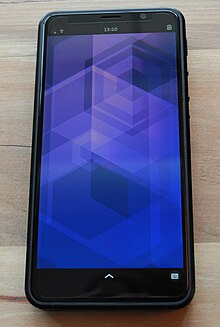
A smartphone is a mobile device that combines the functionality of a traditional mobile phone with advanced computing capabilities. It typically has a touchscreen interface, allowing users to access a wide range of applications and services, such as web browsing, email, and social media, as well as multimedia playback and streaming. Smartphones have built-in cameras, GPS navigation, and support for various communication methods, including voice calls, text messaging, and internet-based messaging apps.
Android is a mobile operating system based on a modified version of the Linux kernel and other open-source software, designed primarily for touchscreen mobile devices such as smartphones and tablets. Android is developed by a consortium of developers known as the Open Handset Alliance, though its most widely used version is primarily developed by Google. It was unveiled in November 2007, with the first commercial Android device, the HTC Dream, being launched in September 2008.
A mobile operating system is an operating system used for smartphones, tablets, smartwatches, smartglasses, or other non-laptop personal mobile computing devices. While computers such as typical/mobile laptops are "mobile", the operating systems used on them are generally not considered mobile, as they were originally designed for desktop computers that historically did not have or need specific mobile features. This line distinguishing mobile and other forms has become blurred in recent years, due to the fact that newer devices have become smaller and more mobile unlike hardware of the past. Key notabilities blurring this line are the introduction of tablet computers, light-weight laptops, and the hybridization of the two in 2-in-1 PCs.
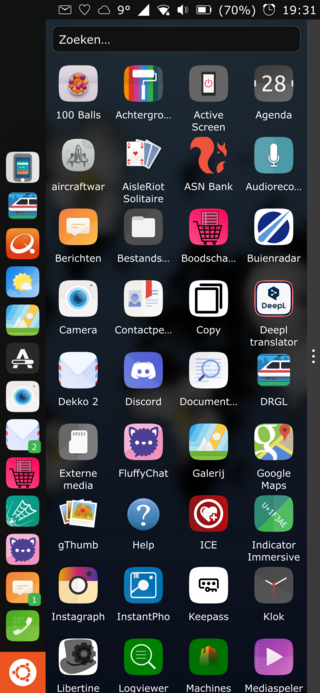
Ubuntu Touch is a mobile version of the Ubuntu operating system, being developed by the UBports community. Its user interface is written in Qt, and is designed primarily for touchscreen mobile devices such as smartphones and tablet computers, but the original goal of convergence was intended to bring Ubuntu Touch to laptops, desktops, IOT devices and TVs for a complete unified user experience.
Besides the Linux distributions designed for general-purpose use on desktops and servers, distributions may be specialized for different purposes including computer architecture support, embedded systems, stability, security, localization to a specific region or language, targeting of specific user groups, support for real-time applications, or commitment to a given desktop environment. Furthermore, some distributions deliberately include only free software. As of 2015, over four hundred Linux distributions are actively developed, with about a dozen distributions being most popular for general-purpose use.
Linux for mobile devices, sometimes referred to as mobile Linux, is the usage of Linux-based operating systems on portable devices, whose primary or only Human interface device (HID) is a touchscreen. It mainly comprises smartphones and tablet computers, but also some mobile phones, personal digital assistants (PDAs) portable media players that come with a touchscreen separately.
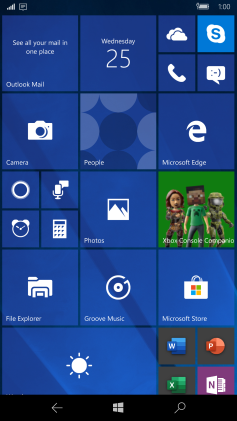
Windows 10 Mobile was a mobile operating system developed by Microsoft. First released in 2015, it is a successor to Windows Phone 8.1, but was marketed by Microsoft as being an edition of its PC operating system Windows 10.

Librem is a line of computers manufactured by Purism, SPC featuring free (libre) software. The laptop line is designed to protect privacy and freedom by providing no non-free (proprietary) software in the operating system or kernel, avoiding the Intel Active Management Technology, and gradually freeing and securing firmware. Librem laptops feature hardware kill switches for the microphone, webcam, Bluetooth and Wi-Fi.

Purism, SPC is an American computer technology corporation based in San Francisco, California and registered in the state of Washington.
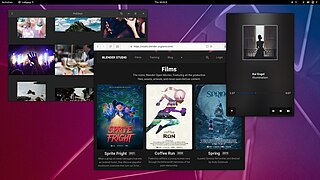
PureOS is a Linux distribution focusing on privacy and security, using the GNOME or KDE Plasma desktop environment. It is maintained by Purism for use in the company's Librem laptop computers as well as the Librem 5 smartphone.

postmarketOS is an operating system primarily for smartphones, based on the Alpine Linux distribution.
/e/ is a fork of LineageOS, an Android-based mobile operating system, and associated online services. /e/ is presented as privacy software that does not contain proprietary Google apps or services, and challenges the public to "find any parts of the system or default applications that are still leaking data to Google."

Fractal is an instant messaging client and collaboration software for the GNOME desktop based on the Matrix protocol.

Phosh is a graphical user interface designed for mobile and touch-based devices and developed by Purism. It is the default shell used on several mobile Linux operating systems including PureOS, Mobian, and Fedora Phosh. It is also an option on postmarketOS, Manjaro, and openSUSE.

HarmonyOS (HMOS) is a distributed operating system developed by Huawei for smartphones, tablets, smart TVs, smart watches, personal computers and other smart devices. It has a multikernel design with dual frameworks: the operating system selects suitable kernels from the abstraction layer in the case of devices that use diverse resources. The operating system was officially launched by Huawei in August 2019.

The PinePhone is a smartphone developed by Hong Kong-based computer manufacturer Pine64, intended to allow the user to have full control over the device. Measures to ensure this are: running mainline Linux-based mobile operating systems, assembling the phone with screws, and simplifying the disassembly for repairs and upgrades. LTE, GPS, Wi-Fi, Bluetooth and both cameras can be physically switched off. The PinePhone ships with the Manjaro Linux operating system using the Plasma Mobile graphic interface, although other distributions can be installed by users.
The scope for this page is that used for list of open-source mobile phones.

The PinePhone Pro is a smartphone developed by Hong Kong-based computer manufacturer Pine64. The phone is the successor to the PinePhone released in 2019. The default operating system is Sailfish OS. The device is a developer platform with open hardware specifications but with unfinished software. The target group of the device is free and open-source software developers who will develop the software. The device was first shipped to developers in December 2021, and in February 2022 devices were made available to consumers.
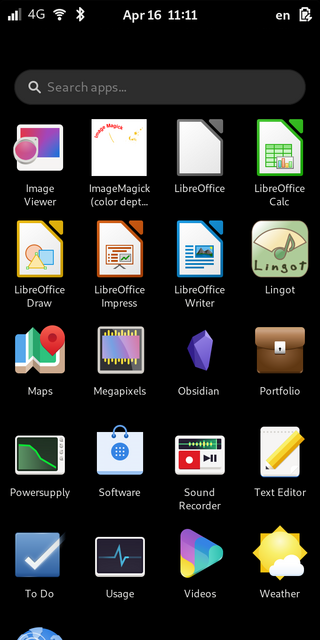
Mobian is a project to port the Debian GNU/Linux distribution running the mainline Linux kernel to smartphones and tablets. The project was announced in 2020. It is available for the PinePhone, PineTab, Librem 5, OnePlus 6/6T and Pocophone F1. Droidian is a version of Mobian which runs top of Android's variant of the Linux kernel and the Libhybris and Halium adaptation layer, and works with devices which are supported by Ubuntu Touch. It can be installed using UBports installer.


